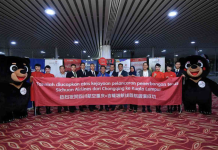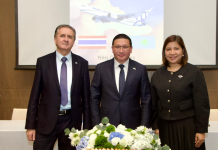BANGKOK, 10 August 2025: Four years after navigating one of the most turbulent chapters in its history, Thai Airways International PCL is back trading on the Stock Exchange of Thailand — and back on a path to profit.
The national carrier officially resumed trading on 4 August with the opening price reaching THB10.50 per share, representing a 134.4% increase from the capital increase offering price of THB4.48 per share, with a market capitalisation of nearly THB300 billion.*

It suggests an unwavering focus on profitability and premium business travel. THAI is no longer in survival mode. It’s in ascent.
From crisis to comeback
In 2020, the COVID-19 pandemic dealt a near-fatal blow to Thai Airways, forcing it into bankruptcy protection with over USD11 billion in debt. Years of financial mismanagement, bloated costs, and political interference compounded the crisis. The airline filed for rehabilitation in May 2021 under court supervision — a move some called its final lifeline.
But that rehabilitation has proven transformative. Between 2020 and 2023, the airline slashed debt, sold non-core assets, exited unprofitable routes, and restructured labour and fleet operations. By early 2024, Thai Airways had returned to the black.

Profit/Loss Summary (2020–2025)
• 2020: Loss of THB141 billion
• 2021: Loss of THB55 billion
• 2022: Loss reduced to THB12 billion
• 2023: Net profit of THB12.5 billion
• 2024: Net profit of THB18.7 billion
• 2025 Forecast: Net profit expected to exceed THB21 billion with a 25% net margin
Ten consecutive profitable quarters — including typically weak Q2 and Q3 — support this optimism. Bookings for H2 2025 remain strong, bolstered by business travellers from Europe, Australia, and regional hubs, despite regional tourism dips.
Fleet: From bloated to balanced
Before bankruptcy, Thai Airways operated a vast, inefficient fleet of 103 aircraft, including multiple aircraft types—ranging from the Airbus A340-600 to the Boeing 747-400—that incurred heavy maintenance costs.
Post-rehabilitation (2025)
The fleet has been streamlined to 67 aircraft, including:
• Airbus A350-900 (new flagship for long-haul) photo
• Boeing 777-300ER
• Airbus A320 (regional and short-haul)
• Decommissioned: 747s, A340s, and older 777s
In late 2023, Thai Airways placed a landmark order for 45 Boeing aircraft (mostly 787 Dreamliners), with options for 35 more. Deliveries begin in 2028 — well after current US-Thailand trade talks — discrediting rumours of political influence.
Chairman Lawaron Sangsanit reaffirmed that fleet decisions are “commercial, not political”.
THAI CEO Chai Eamsiri added his assurances to the narrative, saying further acquisitions will be guided by route demand, fuel efficiency, and long-term returns.
Investor confidence improves
On 4 August 2025, Thai Airways resumed trading on the SET. Within 48 hours, its share price had tripled, climbing from THB4.48 to THB13.80. The rally, analysts said, reflects genuine investor confidence rooted in operational turnaround, lean cost structure, and renewed brand equity.
“This is not a bubble,” Chai noted. “We’ve built a business model that’s profitable year-round, not just in high season.”
Strategic shift: Profit over politics
Unlike its pre-2020 incarnation, the reborn Thai Airways is decisively profit-driven. The company has pivoted away from reliance on low-yield leisure traffic and now prioritises high-value business routes to Europe, Australia, and regional capitals.
Resumption of daily flights to Cambodia despite ongoing regional tensions illustrates this resolve. “Our operations are based on business logic, not fear,” said Chai. “We are resilient and agile.”
Should net profit surpass the 25% threshold in 2025, THAI will consider issuing dividends, marking a significant milestone for shareholders and government stakeholders.
SWOT Analysis: The new THAI
Strengths
• Strong profitability and cash flow
• Strong brand recognition
• Lean, modern fleet under renewal
• Focus on premium markets
Weaknesses
• Limited aircraft availability until 2028
• Still rebuilding international alliances
• Smaller fleet restricts network growth
0pportunities
• Expansion into high-yield business routes
• New code-sharing and alliance partnerships
• Regional premium tourism markets
Threats
• Geopolitical instability
• Fuel price volatility
• Delays in aircraft delivery
Thai Airways International now stands as a symbol of resilience. No longer weighed down by debt or outdated equipment, it has rebuilt itself as a competitive global carrier—proudly independent of political meddling, and with investors, regulators and passengers once again on board.
“Discipline and data, not deals and diplomacy, will drive our future,” said Chairman Lawaron.
*THAI announcement 4 August 2025.

About the author
Andrew J Wood is a British-born, Bangkok-based travel journalist and editor with over 40 years of experience in the hospitality and tourism industry. A former hotel general manager, he has worked with renowned brands including the Royal Cliff Hotels Group and Shangri-La Hotels. He is currently A&P Media CEO. A long-time resident of Thailand since 1991, he is also a past President of Skål International Bangkok, Thailand and Skål Asia.






